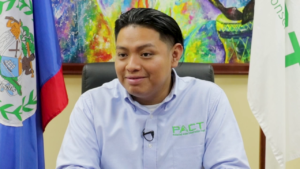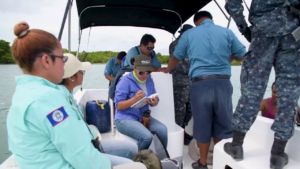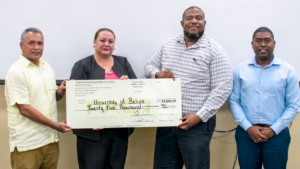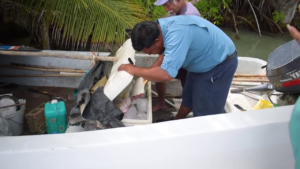PACT: Investing In Belize
The Protected Areas Conservation Trust has been quietly working behind the scenes to provide several N.G.O.’s and conservation organizations in Belize with the necessary funds to keep the country’s natural resources safe and thriving. The work that PACT does is an essential part of preservation work in Belize, as there are currently one hundred protected areas that form a vast national protected areas system. In order to learn more about that process, we visited their office today and spoke with Conservation Investment Manager, Ismael Teul. Here’s News Five’s Britney Gordon with tonight’s episode of Belize on Reel.
Britney Gordon, reporting
The Protected Areas Conservation Trust (PACT) was established in 1996 and at the time, Belize was considered a pioneer with the passing of the PACT Act. Today, the protected areas landscape continues to take shape and expand. Currently, there are one hundred and three protected areas that form a vast national protected areas system with categories that include forest reserves, natural monuments, and archaeological reserves. After over twenty-five years, PACT has evolved from a grant-funding mechanism and works hand in hand with NGO’s and other environmental organizations to preserve these natural resources in Belize. PACT’s conservation investment manager, Ismael Teul broke down that process for us.

Ismael Teul
Ismael Teul, Conservation Investment Manager, PACT
“What we do is we’re a Financing institution for what we would term or call the National Protected Areas System, right? What that is simply all the protected areas functioning as one entire system. And our primary role is to see how we get funding so that they work of protecting the environment, providing clean air, clean water, and of course, protecting our natural resources could continue.”
 Teul explained that PACT uses a system in order to enact its funding mechanisms. In a given period, PACT may fund twenty to thirty areas but each area is assessed on how it benefits its bordering protected areas. By targeting areas with heavy impact on the ones surrounding it, the number of protected areas is expanded. Teul further explained that a national assessment is carried out in order to choose what areas will be targeted. The Bladen Nature Reserve, Chiquibul National Park, Monkey Bay Wildlife Sanctuary, and Corozal Bay Wildlife Sanctuary are just a few of the areas Pact has partnered with in the past.
Teul explained that PACT uses a system in order to enact its funding mechanisms. In a given period, PACT may fund twenty to thirty areas but each area is assessed on how it benefits its bordering protected areas. By targeting areas with heavy impact on the ones surrounding it, the number of protected areas is expanded. Teul further explained that a national assessment is carried out in order to choose what areas will be targeted. The Bladen Nature Reserve, Chiquibul National Park, Monkey Bay Wildlife Sanctuary, and Corozal Bay Wildlife Sanctuary are just a few of the areas Pact has partnered with in the past.
 Ismael Teul
Ismael Teul
“And so it’s, what PACT does is it doesn’t grant, in the traditional sense of the word, funds, but it invests. So it provides financing to a protected area that in a three year period, four year period we’re expecting returns on that investment. Now, the key here is that we’re not expecting financial returns as a bank would work, but we’re expecting more conservation returns. So it’s okay, the water quality, if it was a polluted area. Did that pollution go down? If it was to protect a endangered species, what’s the population count at the end of the four year period? It’s those conservation returns that we look at as PACT”
Teul further explained that PACT’s mission goes beyond just the environmental impacts, as it carries over into all sectors of Belize and PACT’s mission ultimately seeks to ensure the safety and longevity of the country.
 Ismael Teul
Ismael Teul
“Our natural environment really is the heart of our economy.The tourism industry, for example, is one of our largest industry, but the protected areas is actually the natural attractions that we bring to the ecotourist market. Also, we have agriculture which is our second largest industry in the country. And so, providing that, safe water or that water for the agricultural lands, providing the trees for carbon and processing. And so we have a lot of natural assets still within our country that if we don’t protect them and use them sufficiently, then we affect the wellbeing of. of the Belizean people, right? Further to that, you also have indigenous communities. You have local communities that depend on the protected areas.”
Britney Gordon for News Five.






Facebook Comments